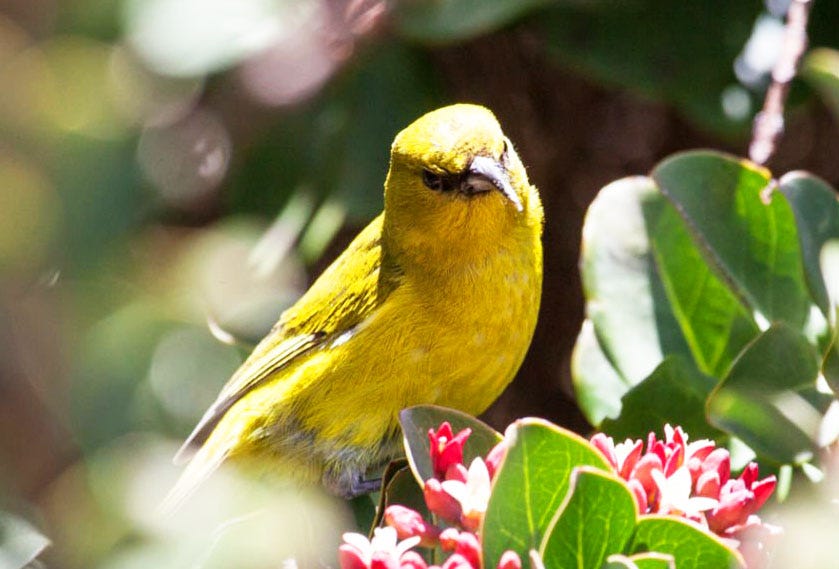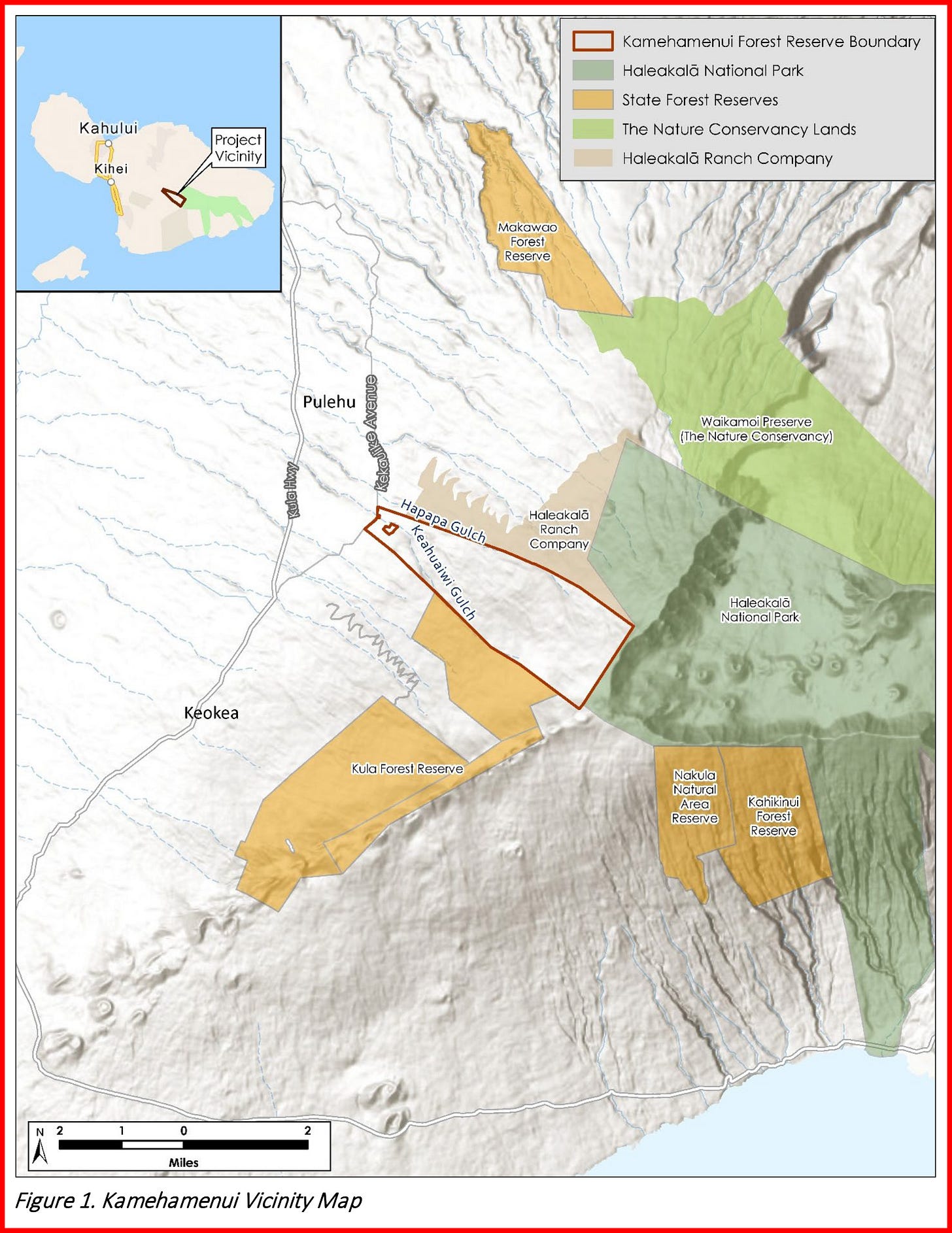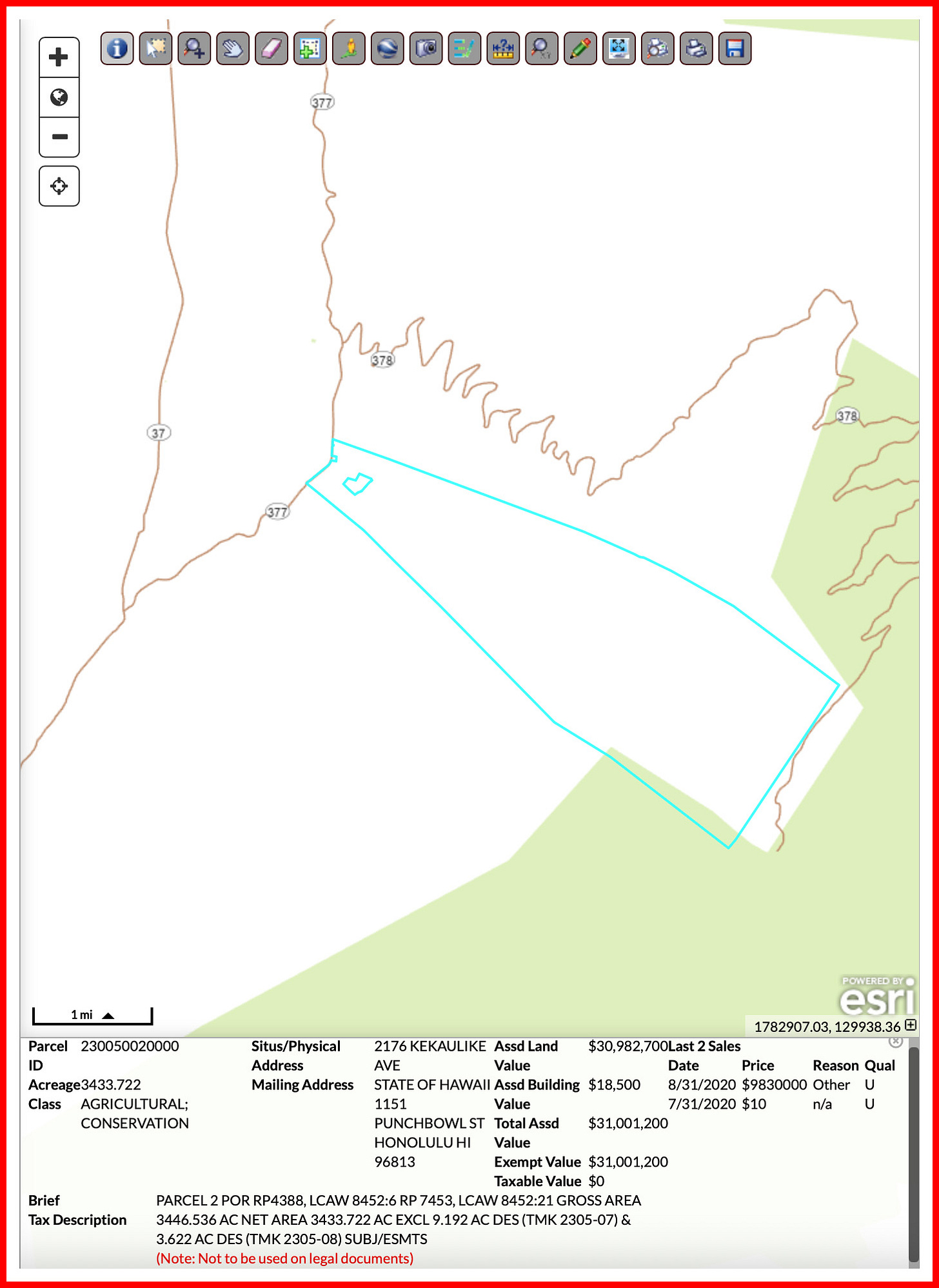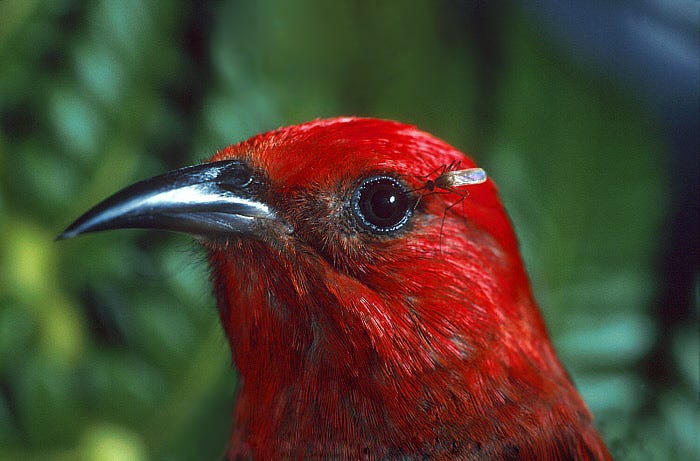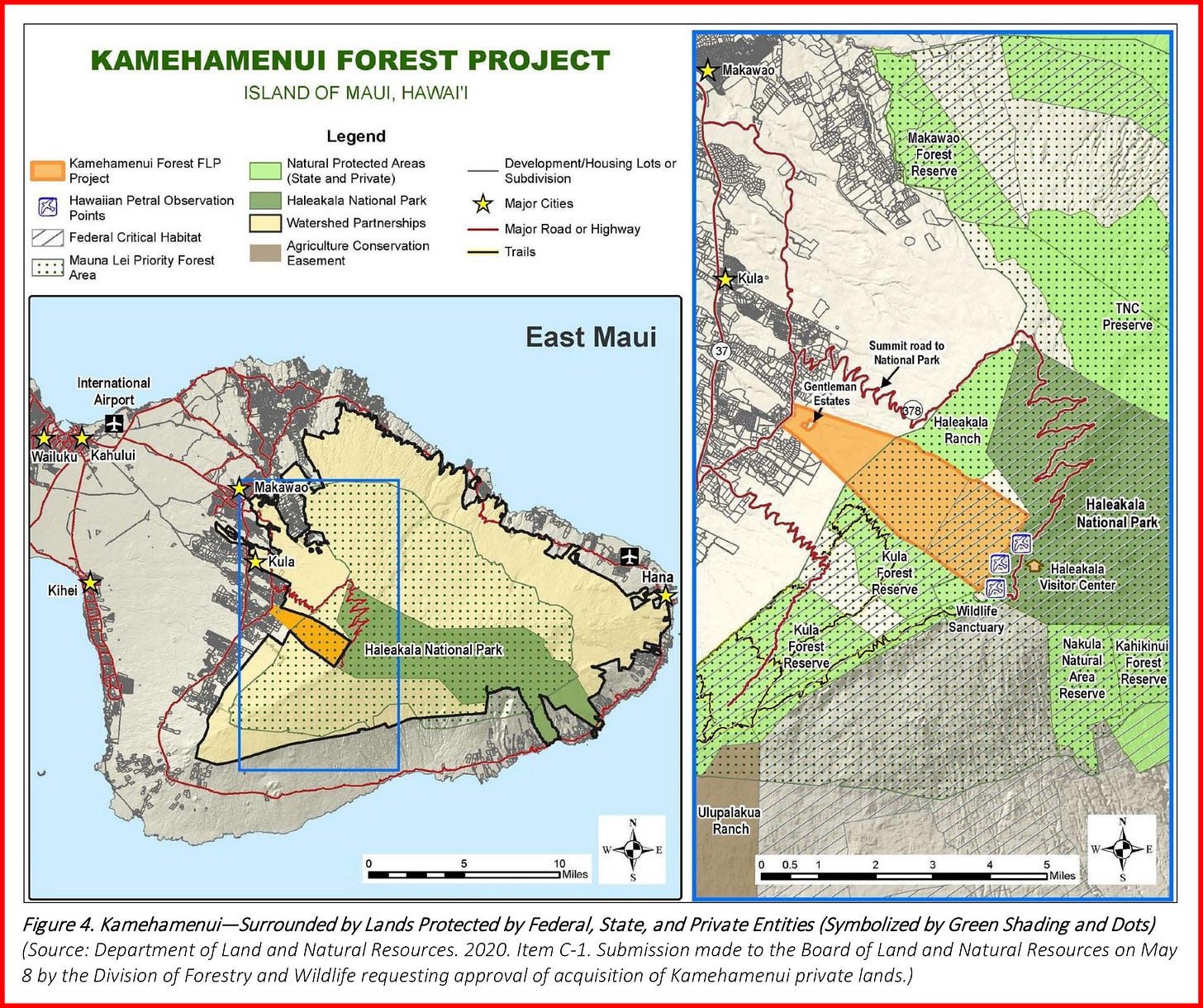Hawai‘i DLNR Looking to Expand Mosquito Release Areas on Maui
Mosquito control is an objective of the Kamehamenui Forest Reserve Management Plan. Comment by 10/23 to oppose mosquito releases.
The State of Hawai‘i Department of Land and Natural Resources (DLNR) is proposing a new project in East Maui that would allow for expansion of experimental mosquito releases on the island. The DLNR’s Kamehamenui Forest Reserve Management Plan – Draft EA (AFNSI) has been published, and the project includes a narrative focused on the threat of avian malaria to native birds and the need for Culex quinquefasciatus mosquito control as an objective.
The public comment period is open, and Hawai‘i Unites has submitted a detailed comment opposing the proposal as worded. Current DLNR mosquito control strategies center around the release of millions of Wolbachia-bacteria-infected mosquitoes in our fragile ecosystems and conservation areas on Maui and Kaua‘i. No studies have been done to assess the serious risks of these lab-altered mosquitoes, and this proposed Kamehamenui project would allow for escalation of these dangerous biotech experiments. We are asking that that the plan be amended to state that lab-altered mosquitoes will not be released in the Kamehamenui Forest Reserve project area.
Please take the time to submit a comment in opposition to the release of lab-altered mosquitoes as a control objective for this proposed project. The deadline to comment is Thursday, October 23, 2025.
COMMENT on Kamehamenui Forest Reserve Draft Management Plan
I’m opposed to any release of lab-altered mosquitoes as an objective of the Kamehamenui Forest Reserve Draft Management Plan. The mosquitoes currently being released by the DLNR as a control strategy in East Maui are experimental, and serious risks have not been studied or addressed. Concerns include accidental release of female mosquitoes that bite, breed, and spread disease; peer-reviewed studies showing increased disease-spreading capability; horizontal transmission of bacteria; population replacement; wind drift of mosquitoes to unintended areas; lack of documented biosecurity protocols and pathogen screenings; and risks to the health of people and animals, including the native birds these projects claim to protect.
According to the Draft EA, the DLNR Division of Forestry and Wildlife (DOFAW) plans to “protect the natural and cultural resources at Kamehamenui while simultaneously managing public use in a responsible way to allow for sustainable and appropriate recreational activities.” While the management plan appears focused on enhancing watershed functions and protecting resources, the EA specifies that survival and recovery of rare native plants and animals in the project area depends upon reducing impacts from threats such as “disease-bearing mosquitoes and other introduced insects, diseases, and forest pathogens.”
Section 4.3.3 of the Draft Management Plan parrots the same narrative the DLNR has been using to push experimental mosquito releases on the islands:
“Mosquitoes (especially Culex quinquefasciatus) are vectors for avian malaria. Since European contact in 1776, Hawai‘i has lost nearly half of its native birds due to diseases, particularly avian malaria. Many native birds are limited to higher elevations where temperatures are too cold for the malaria parasite and its principal mosquito vector C. quinquefasciatus.”
Climate change is again part of that narrative, and the plan notes activities related to climate change (e.g. carbon sequestration) as potential revenue streams. Of course, we already know the lab-altered mosquito releases themselves are a huge revenue source for the agencies involved. This proposal sets the stage for the DLNR to unleash more biotech mosquitoes on East Maui under the guise of native bird conservation:
“Mosquitoes are probably present in the mid to lower elevations of Kamehamenui. Because of rising temperatures, their spread to the upper elevations of the Reserve where rare native birds occur is an increasing threat.”
Native birds are discussed in the Draft Management Plan. Research priorities for the Hawai‘i ‘amakihi honeycreeper include “determining the ecological requirements of Culex mosquitoes at mid- and high-elevation forests, and developing methods to control mosquito populations.” Similar wording is used for ‘apapane honeycreeper research priorities, and the plan also states that future conservation actions specific to ‘apapane may include control of mosquitoes in degraded habitats. According to the EA, “‘apapane have the highest prevalence of avian malaria” of Hawai‘i’s native forest birds. The EA also notes that ‘apapane “breed in mid-elevation forests, which suggests some disease resistance.” ‘Amakihi have also developed a natural tolerance and resistance to avian malaria, but we may never know how well these honeycreepers might thrive in nature without aggressive human interferences like those deployed by the DLNR and their mosquito release agency partners.
Hawai‘i Unites’ comment opposing mosquito releases as an objective of the Kamehamenui Forest Reserve Management Plan describes numerous concerns, concluding:
“These mosquitoes are a dangerous experiment, and the continued release of this insufficiently studied product is a reckless assault on our natural environment. Hawai‘i Unites opposes the exploitative use of sacred lands of the Hawaiian Islands as testing grounds for the profit-motivated biotech industry to execute the mass release of their experimental Wolbachia-bacteria-infected mosquitoes. The DLNR DEA-AFNSI for the Proposed Kamehamenui Forest Reserve Management Plan allows for the expansion of these mosquito releases in Maui’s watershed and conservation areas, increasing risks to native, threatened, and endangered species. This expansion would further increase risks to our fragile ecosystems, all wildlife, and the health of our community.
Hawai‘i Unites asks that DLNR DEA-AFNSI for the Proposed Kamehamenui Forest Reserve Management Plan be amended to specify that lab-altered mosquitoes will not be released in the Reserve and that control of Culex quinquefasciatus mosquitoes as a management objective will not include the release of Wolbachia-bacteria infected mosquitoes or lab-altered mosquitoes of any kind. Conservation efforts must focus on more environmentally sound approaches like habitat and stream flow restoration, which would honor the ‘āina, the culture, and the ancestral connections of the native birds rather than putting them at further risk of extinction. We stand in firm opposition to all actions that dishonor the ‘āina and the ancestors.”
We have an opportunity to speak out against this agenda. The comment format for this Kamehamenui Draft EA is a feedback form. Question #25 of the form allows for any “comments or feedback.” Please complete and submit the form with your comment by the October 23rd deadline.
COMMENT on Kamehamenui Forest Reserve Draft Management Plan
Note: Regarding Question #5, this Hawai‘i Unites newsletter article includes portions of the Draft Management Plan and the Draft Environmental Assessment. If you’ve read this article in full, you have now read portions of both. You’re encouraged to access the full DLNR documents and learn more about the scope of the project:
Kamehamenui Forest Reserve Management Plan – Draft EA (AFNSI) (includes Draft Management Plan)
Kamehamenui Forest Reserve Virtual Information Guide
Comments can also be submitted by mail to:
Kamehamenui Forest Reserve Draft Management Plan – Comments
P.O. Box 2143
‘Ewa Beach, HI 96706-9998
Mahalo to everyone for continuing to stand with us and make our voices heard as we challenge these dangerous mosquito release experiments in Hawai‘i.
Your tax-deductible donations support the work that we’re doing to protect the ‘āina.
Aloha,
Tina Lia
Founder
Hawai‘i Unites
HawaiiUnites.org
Hawai‘i Unites is a 501(c)(3) nonprofit organization dedicated to the conservation and protection of our environment and natural resources. Your tax-deductible donations help us to fulfill our mission of honoring and protecting our sacred connection to the natural world.
Report a Mosquito Bite
The State of Hawai‘i and its multi-agency partnership Birds, Not Mosquitoes have been releasing bacteria-infected mosquitoes in East Maui and conducting pilot study releases on Kaua‘i since 2023. As part of our ongoing research and documentation, Hawai‘i Unites has been compiling reports from throughout the islands about unusual mosquito bite reactions. If you’ve been bitten by a mosquito and would like to report the incident, please complete our Mosquito Bite Incident Report.


